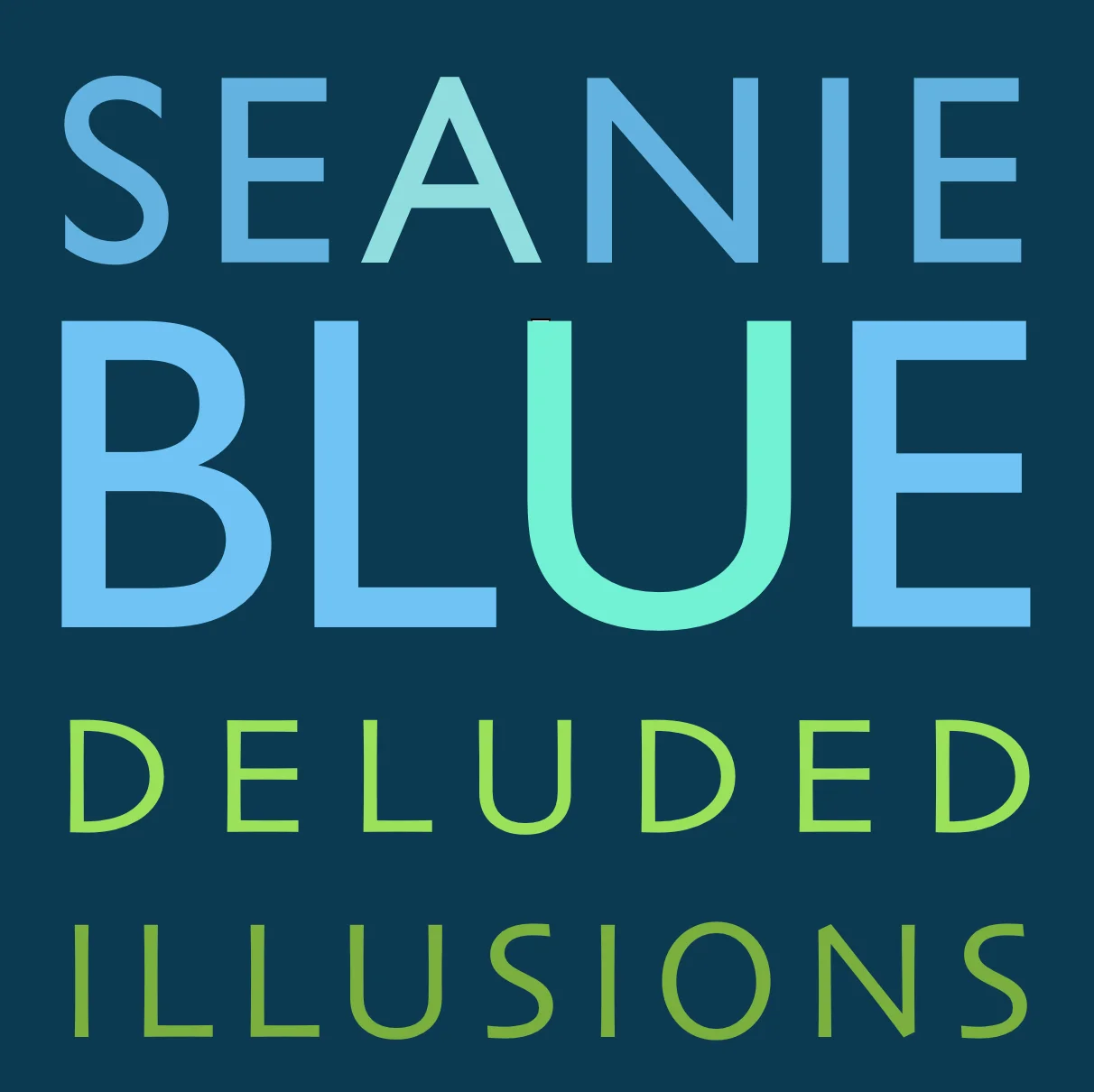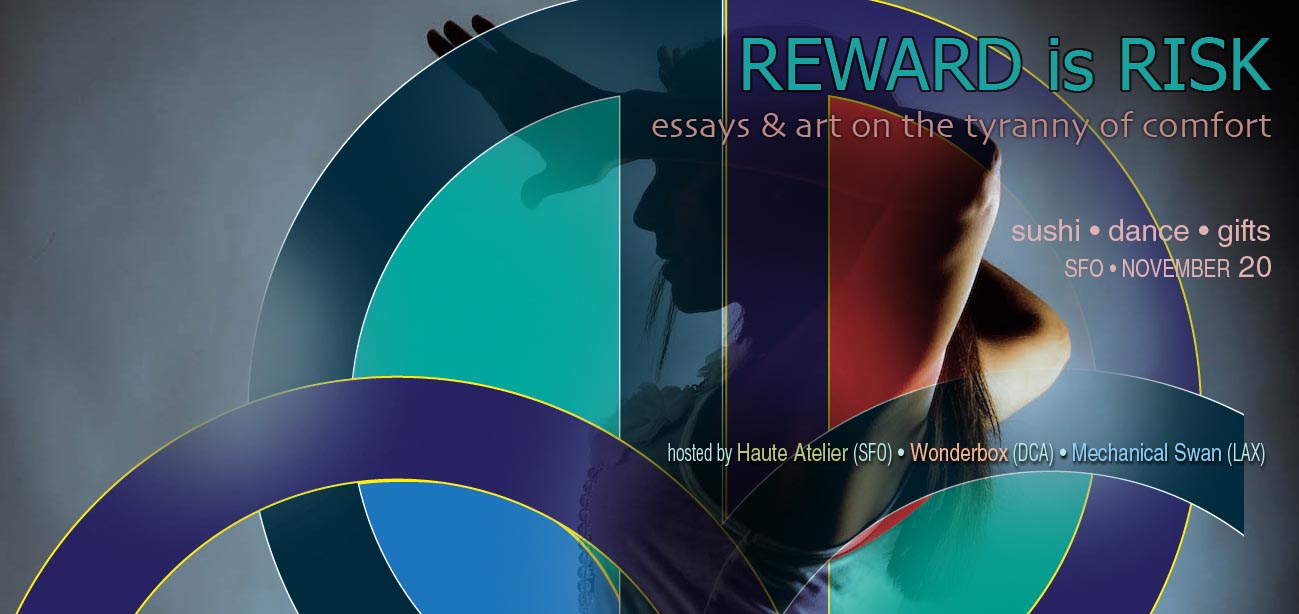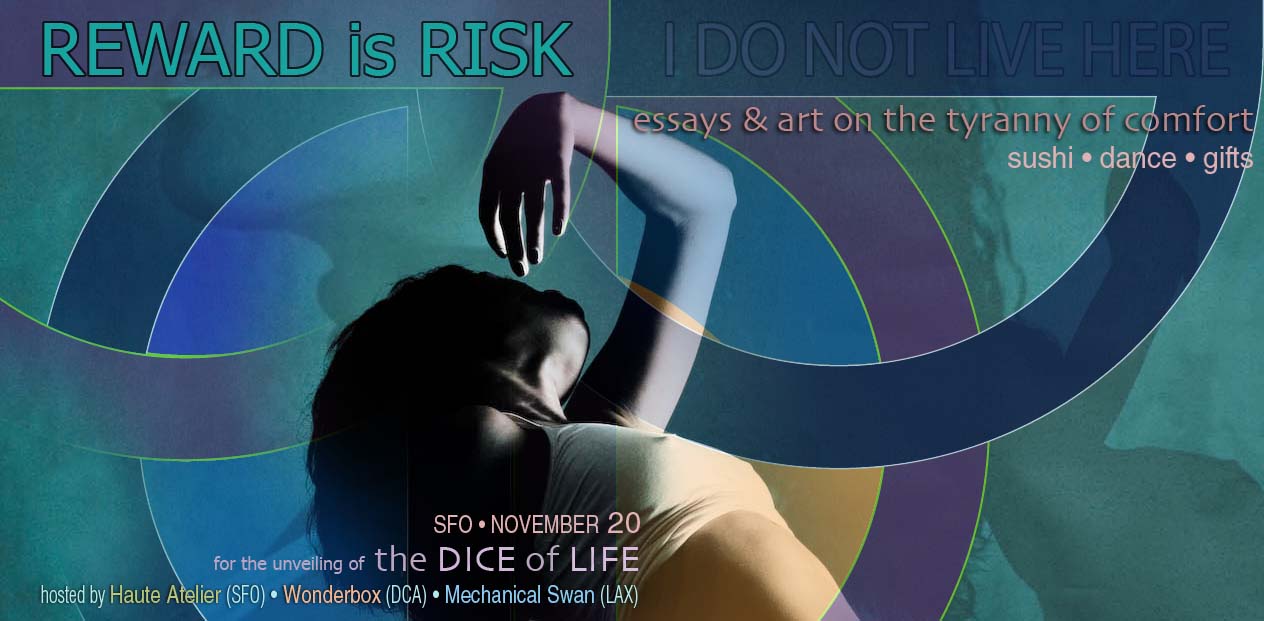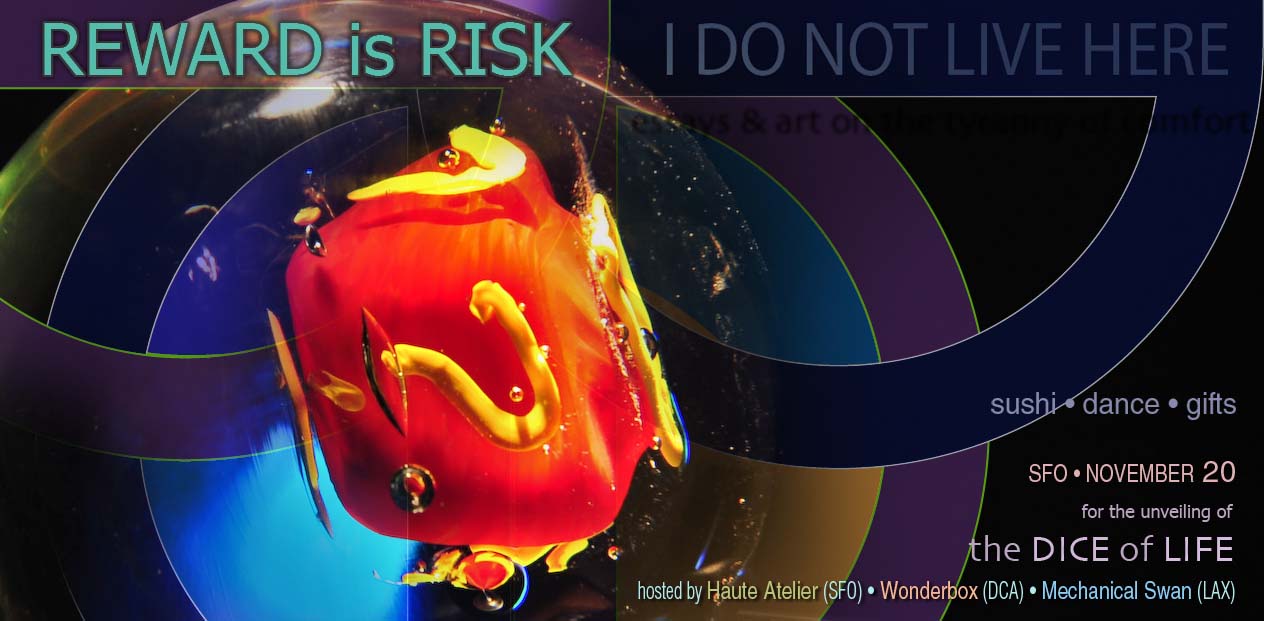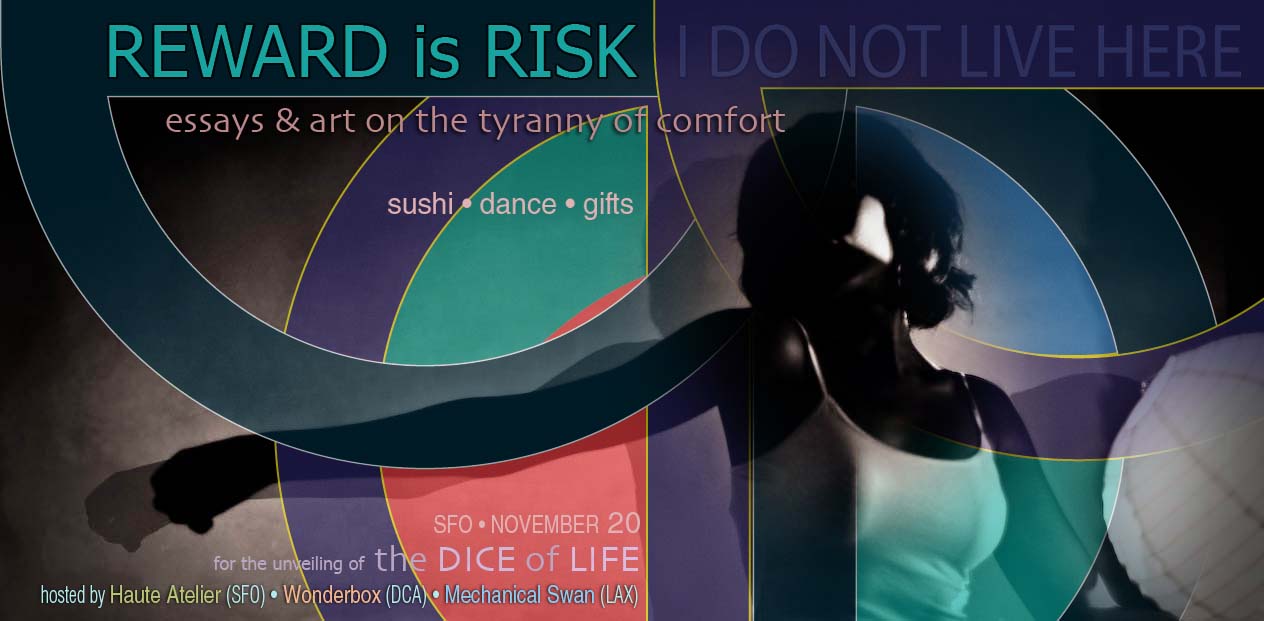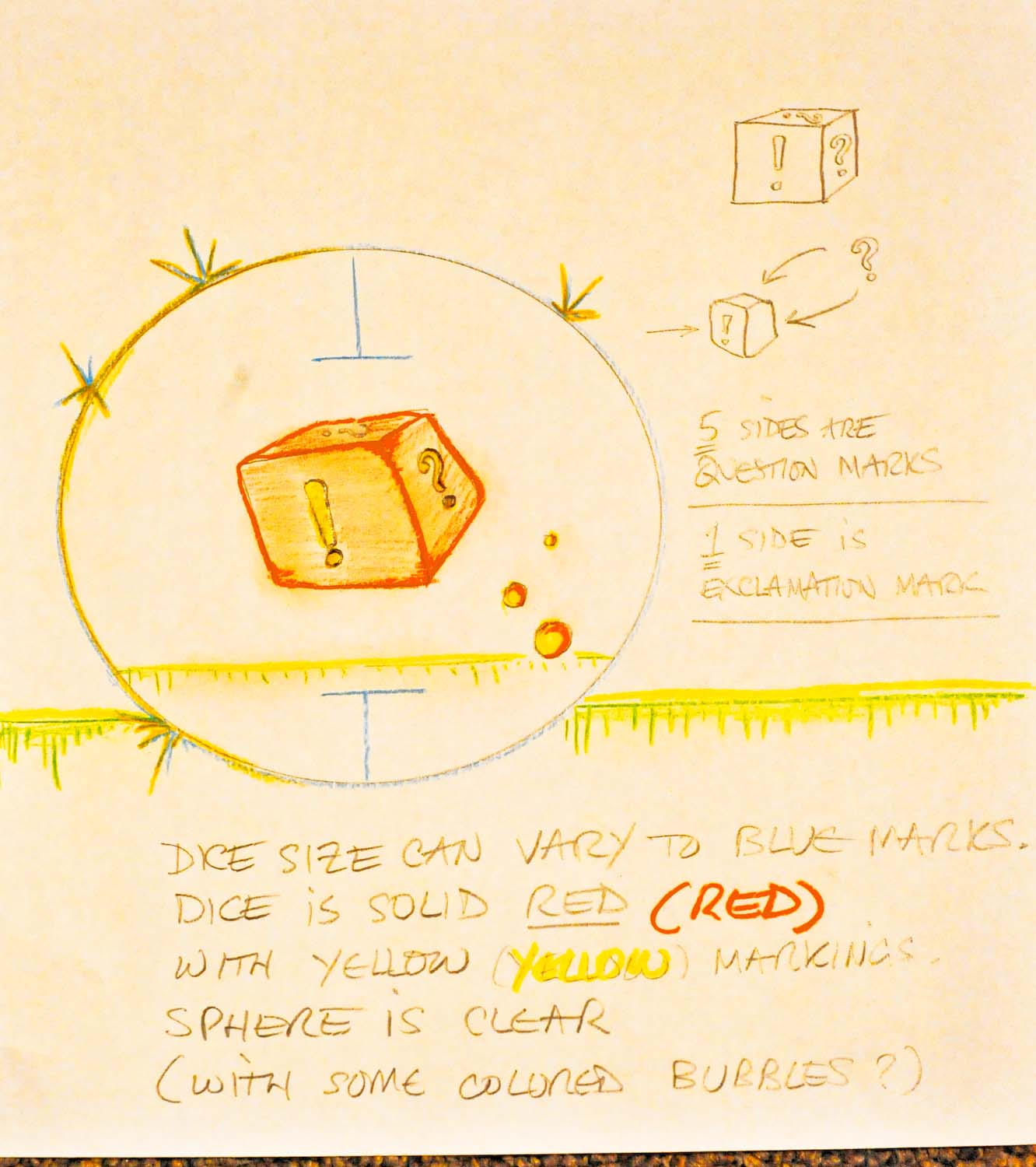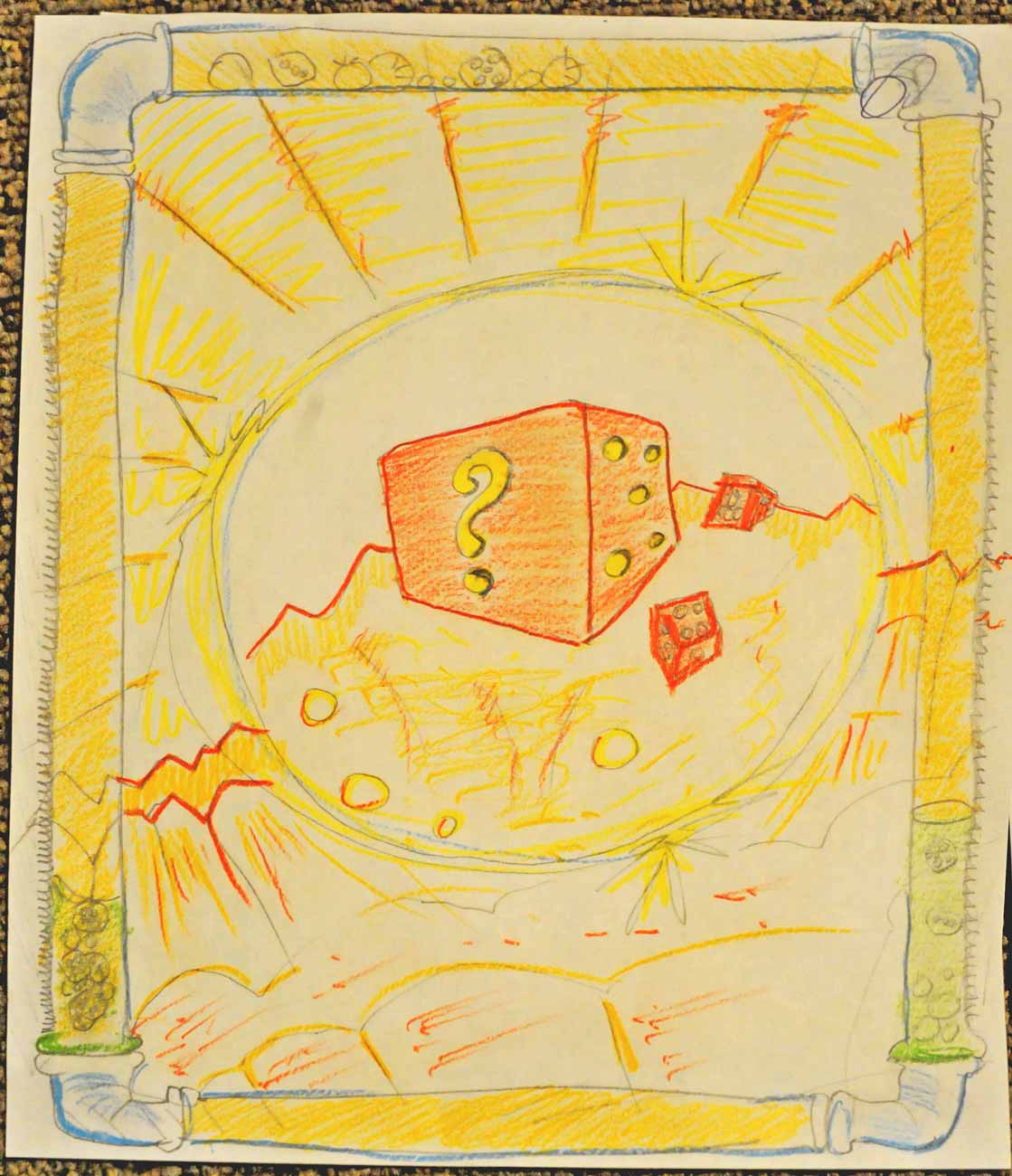Gambling in a Glass Castle
Seanie Blue and Michael Fox are putting the finishing touches on art production which is prejudiced against art collectors and investors. This first result is almost ready for publication: A three-part series of glass pieces which capture the chaos, chance and cancer of creativity. The piece is called "Gambling in a Glass Castle," and is part of a series of installations and productions that Fox & Blue intend to complete in the next year. The crucial third section, which attempts to capture van Gogh's brilliant stroke-making just before his suicide, will involve sinking glass pieces into a frozen oil vat in the Arctic Circle next winter. Below you'll find a summary from each 'movement' of the piece.
1. Chaos: the End of Creativity
Pursuing a victim.
Pursuing completely different paths to artistic status, Fox and Blue found themselves at a similar crossroads in early 2010. One man was in San Francisco, the other in New York, but both were in isolated situations: their art production schedules had become spotty and unpredictable, and their professional relationships had withered away while the inner gyros of inspiration and creativity were no longer elements either man could control. Fox chose to close himself off even more from outside influences, and withdrew from the public arena completely. Blue took on a public persona at exactly the same time; leasing the mixed-arts space Wonderbox and starting a variety of art events with Andy Cassatt and Alana Nason. But at this point of divergence both men admitted their almost complete lack of control over the creative impulse, and simultaneously discovered that a prime aspect of their reluctance to produce stemmed from their dislike of art produced as a commodity. Both Fox and Blue are surrounded by artists and friends of artists who cannot speak about their products without expressing the products' potential market value. How much can you get for it?" is a question that depresses the artist as much as "How are you feeling?" gives pain to the cancer victim.
But what effective method could they employ to renounce the creation of art pieces as "assets", and how could they portray the pleasures and dangers of the processes of making art without value becoming a chief component of their energies? "The End of Creativity" became a piece about rejection of the artistic public self, in which Fox's prized glass works would be destroyed systematically, in private, with the evidence shown only to an audience who would admit that the business of being an artist has eclipsed the practice of making art.
The audience for this message would be other artists.2. Chance: Playing with Loaded Dice
Loaded dice with the numbers 2 thru 6 are also being manufactured in Buffalo, with the side normally reserved for the number ‘1’ imprinted with a question mark instead, resulting in double question marks every time a pair is rolled. These Dice of Life, about the same size as normal casino dice, will be packaged in small bags loaded with fine sands from the Kalahari Desert, or from the Kelso Dunes or from the Valley of Fire, and the pricing for each pair will be clearly marked “$0.00,” to avoid any type of asset collector or art investor; these dice can only be given away, never purchased.
Pajama bottoms, a pro-contraception poster, and a book essay are being created to support the big spheres and the little dice, of which there will be 200 commemorative pairs. Sean is headed to Iceland to roll one of the spheres in the abandoned herring vats at Djupavik, where the acoustics are so special that Sigur Ros recorded part of its stellar album “Heima” there.
The audience for this message would be other artists
+ + + + +
3. Cancer: Van Gogh's last strokes
The following excerpt is from Blue's essay "Strokes of the Heart: Putting Vincent van Gogh's Last Vision Into Glass with Michael Fox."
* * *
What would van Gogh think of the people who collect his art?
If you brought him to Amsterdam today, to a fancy party near Vondel Park, where he could eat smoked eel and mingle with the champions of commerce who own his paintings, how would he feel as he sipped his wine? I think he’d eat his canvasses, when nobody was looking, so he could think about the buyers of his work as he crapped them out.
I was just in Holland, visiting my favorite painting, when Michael Fox called from San Francisco, reminding me of the third part of our project called “Gambling in a Glass Castle,” which started as an essay about how our artistic impulses have become debased by the constant speculation over the worth of what we make, but has now become a much more poetic protest against art collectors and investors. The third section of our piece had to show the degeneration of the art process when money is involved, said Fox, and instantly I thought about van Gogh’s last strokes.
We will make glass abstractions of the strokes in van Gogh’s most unsettling painting, I said. Not every stroke, but enough to represent his painting however we wish to display it. We can hang the glass strokes as a fringe and still call it “Wheatfield with Crows,” or bury it in ice and light it in the Arctic winter, or make a three-dimensional installation that plays with van Gogh’s rare use of the Golden Mean (his painting is 19.9 inches by just over 40 inches). Fox was immediately galvanized by the suggestion, especially since at the point van Gogh painted his piece he’d reached a new level of craft, which failed still to keep him painting; we will bring out guns and help Vincent shoot himself in the context of his expertise. Just when his ten thousand hours of experience was about to pay off, van Gogh paid the cost of entry into immortality; dying for his art, he got the attention his strokes needed to become evidence of genius.
Just when he understood what he was doing, just when his brother understood what it meant to be in the service of an utter original, van Gogh fired a bullet into his chest. How many artists would accept such a perfect stage to be shown?
* * *
Blue and Fox started their homage to the Dutchman (and it must be said, to the unsung hero who kept the artist’s legacy growing, Theo’s wife Johanna Bonger) by creating individual glass “strokes” according to the shape and colors of Vincent’s last great work.
Who who who who is Michael Fox?
The video at left was was created by Fox and Blue to commemorate the successful thesis by Fox for his Masters degree at the California College of the Arts. Blue was attracted to this project because of the school's decision to drop the word "craft" from its original name: The California College of Arts and Crafts." The school dropped the word "craft" on the assumption that more students woul wish to pay the higher fees for a school that turned out "artists." This cynical use of the term "art" is something Blue is always enraged to witness; a bull in quicksand, he is left bellowing at every suggestion that art equals money or that artists should pursue money by churning out salable product. Each question, "how much do you think you could sell that piece for" is a flicker of cape, and Blue charges toward a goring that always becomes a death by slow leak.
“Today, the artists have a new role within the configuration of the art world: they must be somewhat business savvy, especially with so many having received expensive academic degrees that yield loans needing to be repaid. The role of the artist in a solo creative endeavor is also becoming obsolete. Just as the APG predicted three decades ago, the business aspect is equivalent to the production of the art itself, with the artist having to take ownership of his or her own career in order to survive.”
